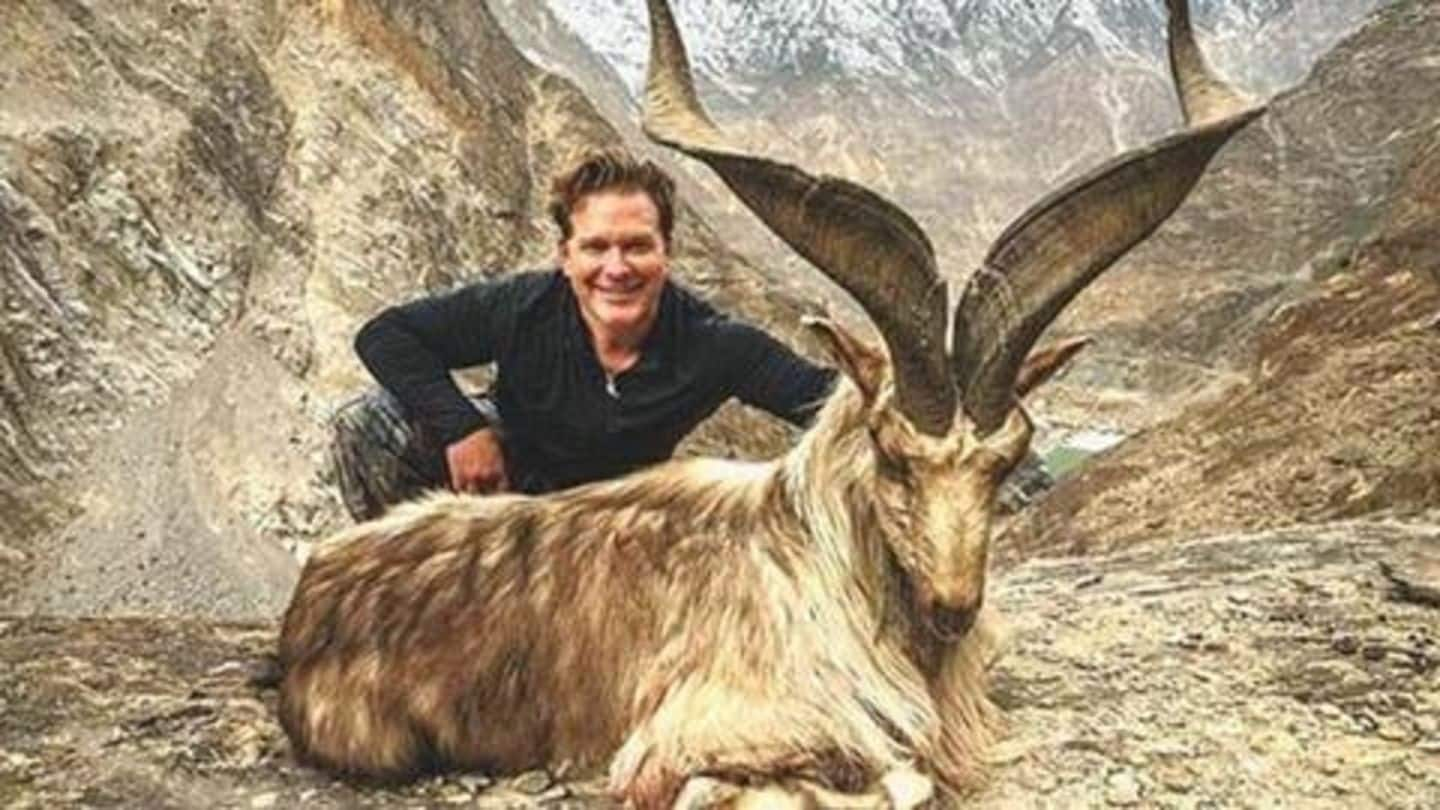
US hunter pays whopping $110,000 to kill Pakistan national animal
What's the story
A hunter from the US paid a whopping $110,000 to the Pakistan government to obtain a permit to hunt and kill a flare-horned Markhor, a rare wildlife species in Pakistan. The hunter, Bryan Kinsel Harlan, completed his kill on Monday. Notably, this is the highest-ever fee received by the Pakistan government for trophy hunting. Here are the details.
Quote
What Harlan had to say
"It was an easy and close shot and I am pleased to take this trophy," said Harlan, who managed to hunt a 41-inch Markhor trophy, which is considered to be a good hunt.
Markhor
The Markhor is a protected species in Pakistan
The Markhor, a distinctive species of wild goat characterized by its long hair and spiralled horn, is the national animal of Pakistan. It is a protected species, and it is illegal to kill Markhors unless the government issues permits for trophy hunting. Annually, the Pakistan government issues four permits for hunting Markhors, and 80% of the proceeds from the permits go to local communities.
Do you know?
There are only 5,700 odd Markhors in the world
According to the International Union for Conservation of Nature, Markhors are a near-threatened species and features in the union's Red List. The animal has a worldwide population of 5,754 and is found in Afghanistan, India (Jammu and Kashmir), Pakistan, Tajikistan, Turkmenistan, and Uzbekistan.
Markhor
Three US nationals paid extravagant fees for Markhor hunting
During the 2018-19 trophy hunting season, three US nationals paid extravagant fees to acquire Markhor hunting permits. While Harlan paid a record $110,000 for his permit, he was followed closely by Dianda Christopher Anthony, who paid $105,000 for his Markhor hunting permit, and completed his kill on January 21. Meanwhile, another US national, John Amistoso, paid $100,000 to kill a Markhor.
Data
Around 50 animals were killed in this trophy hunting season
Markhors apart, a total of around 50 animals were hunted by national and foreign hunters during the 2018-19 trophy hunting season. Officials say that the trophy hunting program has been successful in improving the prosperity of communities in conservation areas.